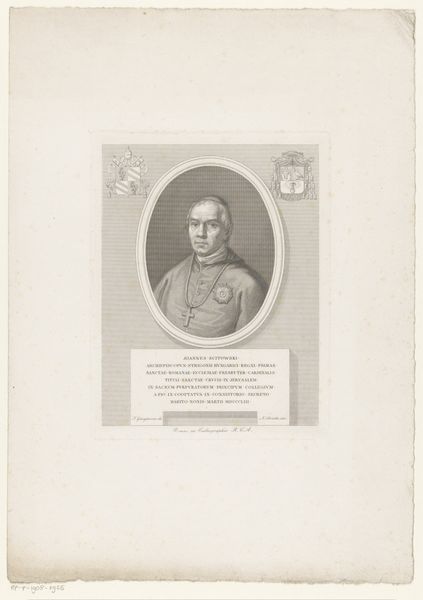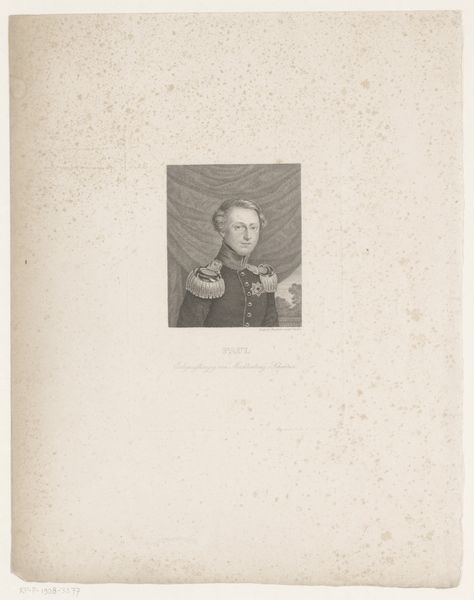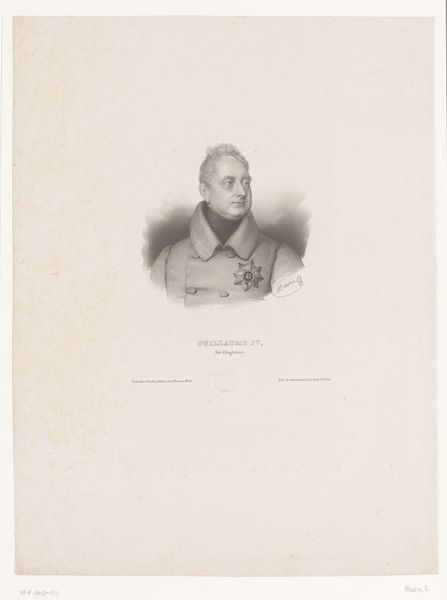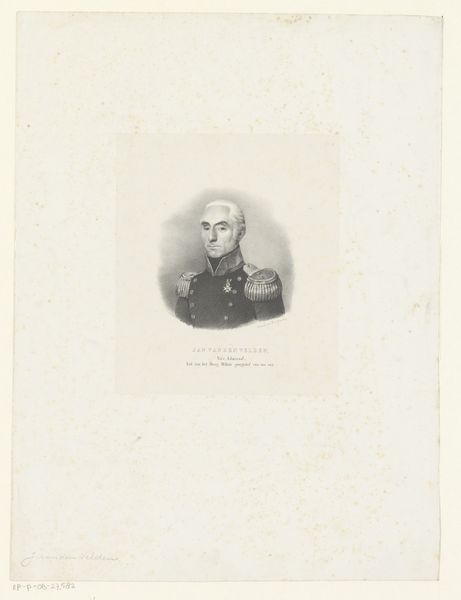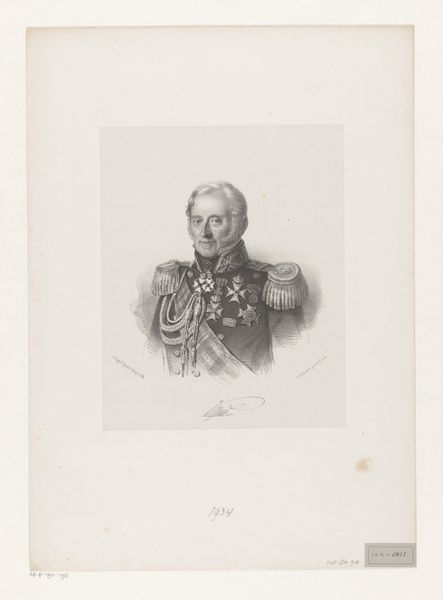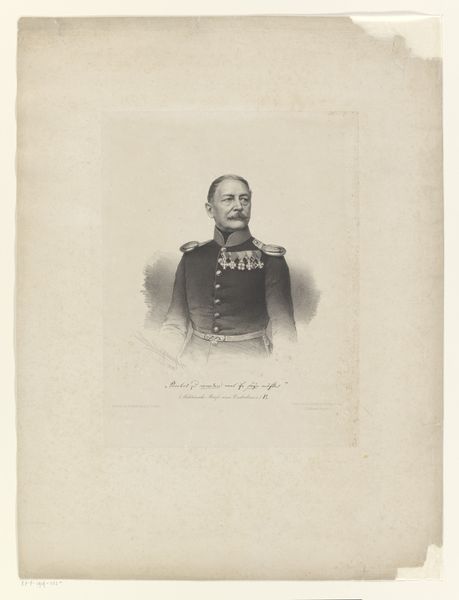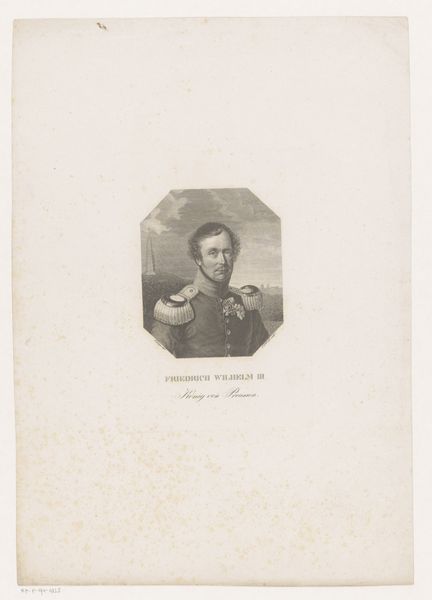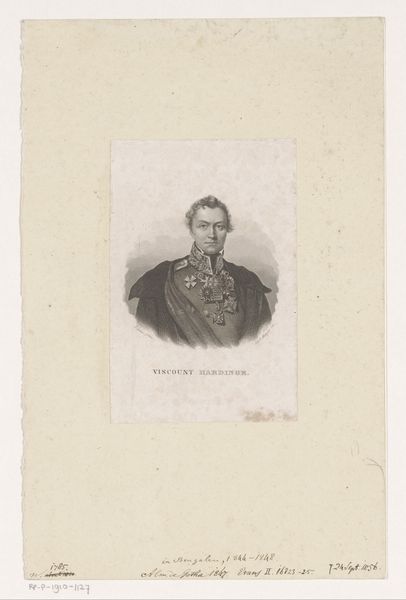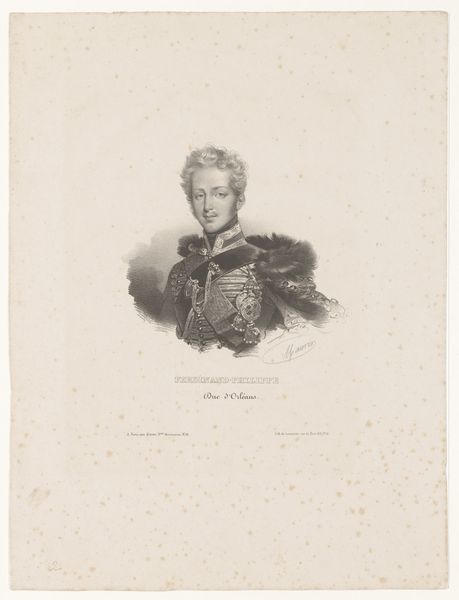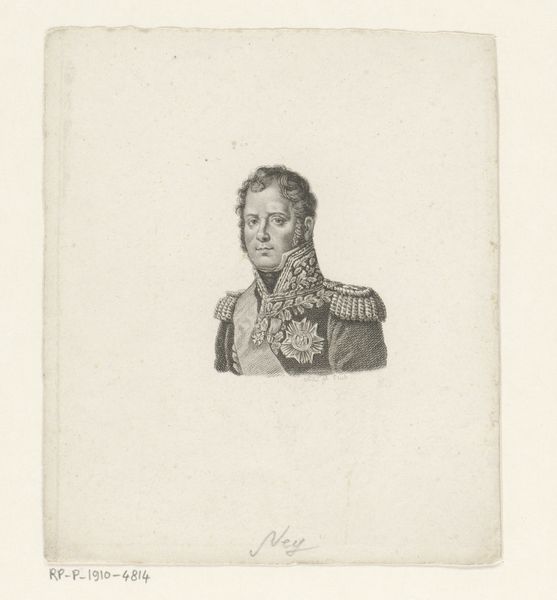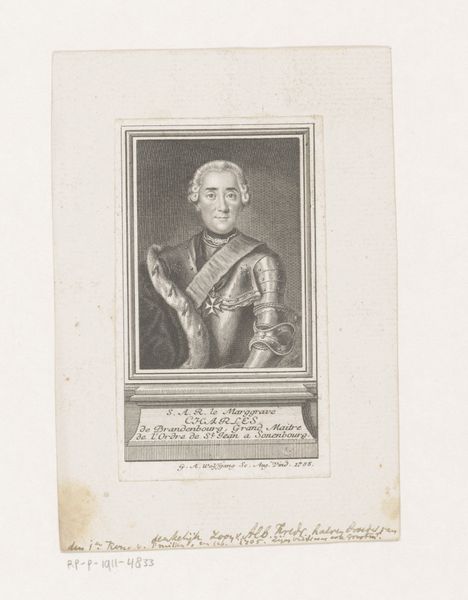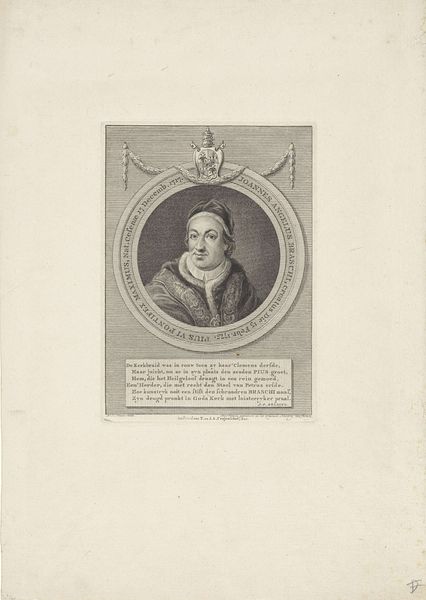
print, paper, graphite, engraving
#
portrait
#
neoclacissism
#
ink paper printed
# print
#
old engraving style
#
paper
#
graphite
#
history-painting
#
engraving
Dimensions: height 535 mm, width 356 mm
Copyright: Rijks Museum: Open Domain
Curator: It’s my pleasure to introduce this engraving to you, “Portret van Koning Willem I in ornamentlijst”, or “Portrait of King William I in an ornamental frame,” created in 1838. Editor: It strikes me as rather austere. The stark black and white, the severe expression—it all conveys a sense of formality, a rigid structure. Curator: Indeed, that's very much aligned with the Neoclassical ideals of the time. This portrait served as a very deliberate projection of power. Prints like this were vital tools for disseminating a certain image of the monarchy to the wider public. It's not just a likeness, but carefully constructed propaganda. Editor: Observe the texture achieved solely through the fineness and variation in the engraved lines. From the fabric of his coat to the feathered detail in the surrounding crest. The artist truly understands light and shadow, imbuing the piece with a sort of depth and subtle realism. Curator: And the details in the frame are politically telling. Above the portrait is a shield, crowned and guarded by cherubs, representing the Dutch monarchy. Below, that miniature scene—it seems to portray the king as a protector, almost divinely appointed. The imagery aimed to legitimize and celebrate the Dutch kingdom after a turbulent period of revolution and Napoleonic rule. Editor: Though small in scale, the print possesses a striking presence due to the careful use of light and shadow and the complex layering of symbolic ornamentation. Curator: The engraving offered a portable, reproducible, and affordable means of representing royal authority across society, reinforcing national identity and loyalty. Editor: Considering all that’s here, my initial reaction, while rooted in its austere qualities, certainly overlooked the dynamism between the work's visual construction and complex socio-political symbolism. Curator: And seeing the print displayed here at the Rijksmuseum—once again viewed by a large public— it’s clear how institutions play a vital role in preserving and presenting these kinds of narratives.
Comments
No comments
Be the first to comment and join the conversation on the ultimate creative platform.
